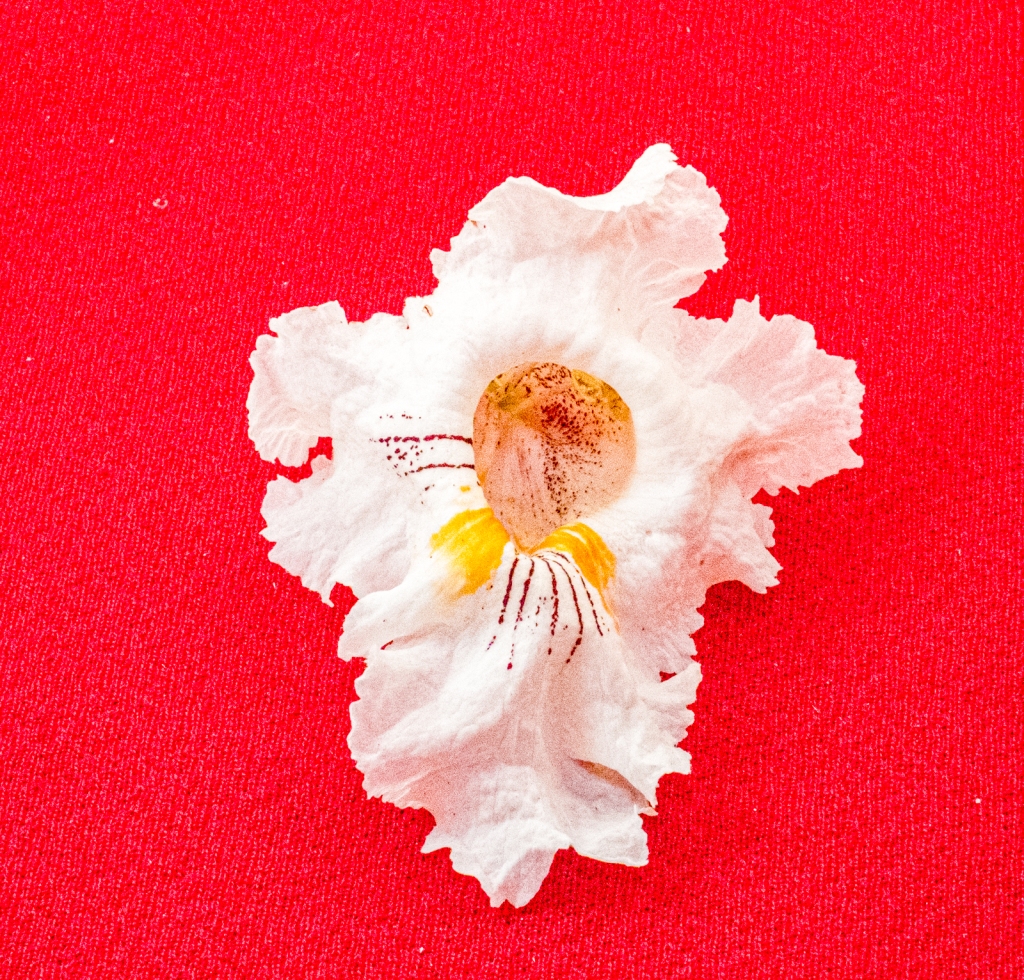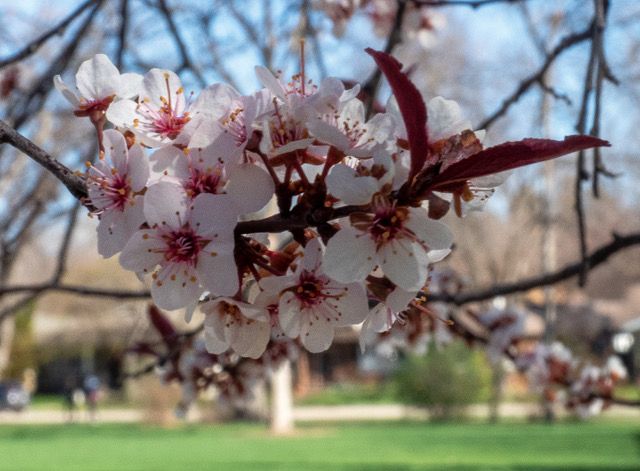
What exactly is a fruit? My unabridged Random House dictionary has five definitions including: the edible part of a plant developed from a flower; part of plant growth useful to humans or animals; the developed ovary of a seed plant. (Random House Dictionary of the English Language, Unabridged, 1987.) More than likely the average person would say something along the lines of “the part of a plant that we eat” or name a few examples, such as a banana, raspberries, or apples.
Saying a fruit is the part of plants that we eat does not distinguish a fruit from a vegetable, but then some botanists would say there is no such thing as a vegetable. Instead they might identify what we call vegetables as the specific non-fruit part of a plant which we eat, for example, the stem (rhubarb, celery) or leaf (kale, spinach) or root (beets, carrots). The botanical definition of a fruit is simply an organ which contains seeds, but complicating matters is the legal case defining a tomato as a vegetable. Nix vs Hedden was settled in 1893.Yes, a tomato is actually a fruit but legally it is a vegetable!

All flowering trees (angiosperms) produce fruit, not all of which we eat. According to Gollner, there are between 70,000 to 80,000 plant species which produce edible fruits. Of these, only about twenty species provide the majority of what we consume.* Other sources are even more pessimistic and say the human species relies mostly on TWELVE species of plant.
Excluding citrus trees, nearly all trees producing the common fruits we eat are members of Rosaceae, or the rose family. Genus Prunus includes plums, cherries, apricots, peaches, and almonds, all of which are drupes or stone fruits. Apples and crabapples fall into genus Malus. Their fruits are collectively known as pomes. Pears, in the genus Pyrus, are also pomes. Fruit cultivation probably began somewhere between 6000 to 3000 BCE, primarily in the Fertile Crescent and Eygpt. Some of the earliest domesticated fruits included figs, dates, and olives.
For eons, fruits eaten raw were suspect, with Pliny stating pears were not digestible and Galen suggesting fruits were “troublesome in everyway.”** Early crops looked little like what we now consume. This link provides a few pictures of early fruits.
Prunus is the largest genus in family Rosaceae with the cherries and plums representing the most species. We do have native plums in North America, but information on all the species, often merely labeled “wild plums,” is difficult to come by. Some internet sources allude to many species, but the only place I found multiple species, about 30, enumerated was on a comprehensive map of wild plums throughout the United States. The accompanying blog post explains wild plums are becoming endangered due to the loss of animals (bears) to disperse the seeds.

The list of trees in City Park includes one native American plum (Prunus americana) tree. For nearly a year I have passed by where this tree is said to be located but have not been able to find a tag or determine any definitive characteristics (like evidence of fruit). It either isn’t there or is hidden in plain sight. Most sources list this species as being either a small tree, usually no taller than 25′ or a shrub with prickly twigs. The leaves, like others in this genre are serrated. The bark becomes scaly with age. The white flowers bloom prior to the leaves as early as March. Fruit is 1″ and turns reddish.***
Purple leaf plum was introduced to this county from Asia, is found mostly on the east and west coasts, although older literature shows a swath of the middle of the US as suitable habitat.
There are three purpleleaf plum trees in City Park, Prunus cerasifera Atropurpurea, also known as cherry plum, myrobalan or Pissardii. According to Dirr and Warren, the Atropurpurea variety is from the 1880s and may be the forerunner of many more recent cultivars. Although I have been observing these dark-leafed trees for a number of years, I have not noticed any fruit on them. This could be because, like the American plum, the fruit is only about an inch long. They do have beautiful pinkish white blossoms early in the spring. The foliage changes over the summer from deep purple to a dark green.


The plum trees from their deep purple to later green
To find the purpleleaf plums (C123), walk along City Park Drive from the exit on Jackson Street until you find a cluster of trees in a space encircled with rocks. When they are in bloom, they are easily identifiable by the color of their leaves.
If you want to try and find the American plum, walk along the ditch between Oak Street and Mountain Avenue and see if anything looks similar to a plum.
Dirr, Michael and Warren, Keith. The Tree Book: Superior Selections for Landscapes, Streetscapes, and Gardens, Timber Press, 2019.
*Gollner, Adam Leith. The Fruit Hunters: A story of Nature, Adventure, Commerce and Obsession, Schriber, 2008. p 23
**Ibid. p. 48
***Sibley, David Allen. The Sibley Guide to Trees.Knopf. 2015

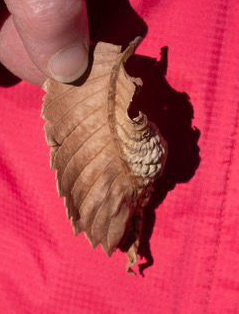



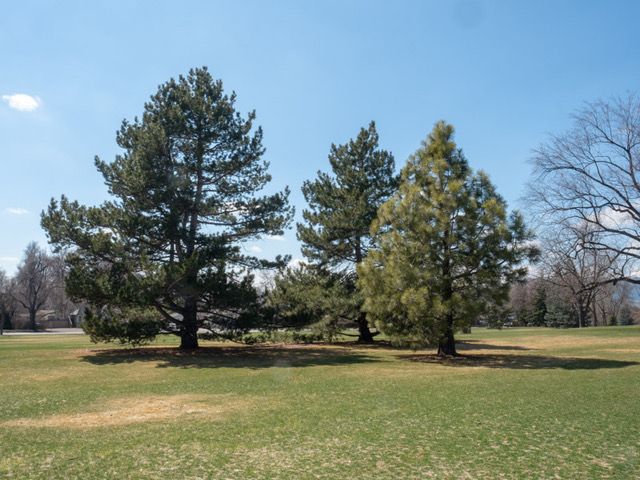
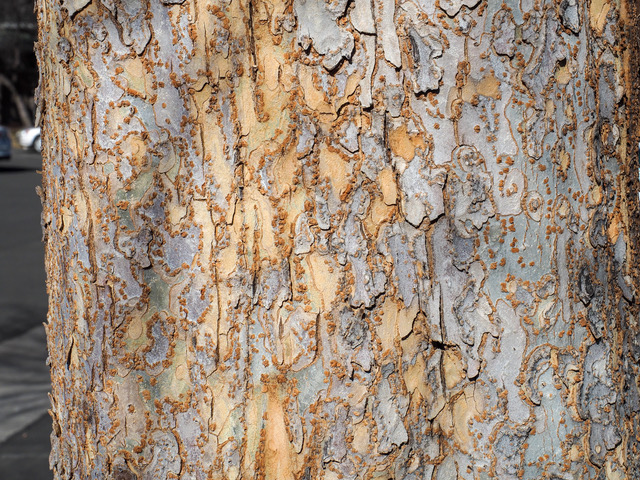










 a
a  from the American beech (Fagus grandifolia) sap. Granted this is not the same type of beech as in the park, but it is still interesting. A study done in
from the American beech (Fagus grandifolia) sap. Granted this is not the same type of beech as in the park, but it is still interesting. A study done in 















